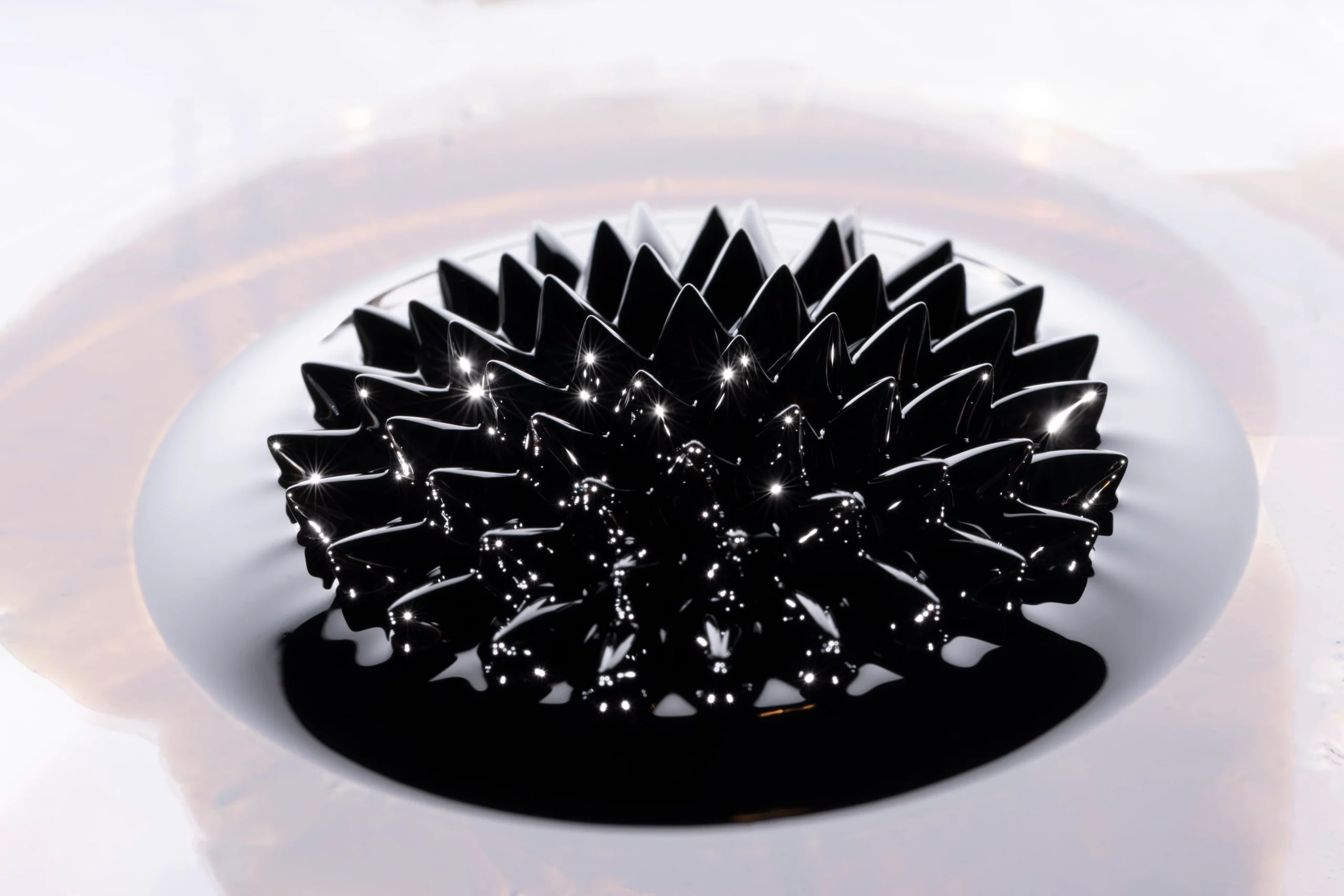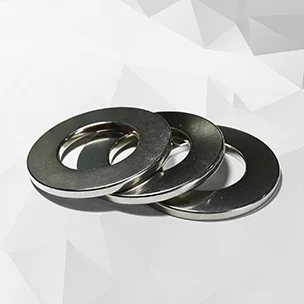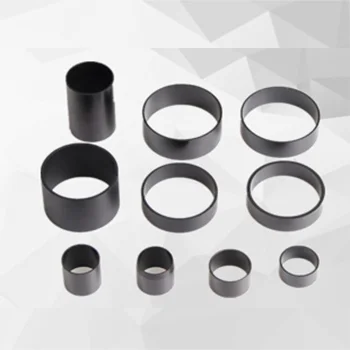Your current browser version is too low, in order to bring you a better browsing effect, please use a higher version browser
Rare earth permanent magnets, like NdFeB (neodymium-iron-boron), are known for their incredible magnetic strength. Their unique tetragonal Nd₂Fe₁₄B crystal shape creates strong magnetization. It also sets a clear magnetic direction. These magnets keep their magnetism for a long time. They hold a lot of energy and resist losing their strength. Adding heavy rare earth elements, like dysprosium (Dy) or terbium (Tb), helps them work well in hot places. Making methods, like sintering, produce high-quality magnets. Bonded types allow flexible shapes. Special coatings prevent rust. This is very important for reactive neodymium magnets. These magnets power electric vehicles (EVs), wind turbines, and medical tools. Scientists are trying to use less Dy or Tb. They also want to make tiny, nanostructured materials for future small devices. AT&M’s sintered magnets are great for tough environments.

Rare earth permanent magnets, especially NdFeB, are special because of their amazing magnetic abilities. The tetragonal Nd₂Fe₁₄B crystal shape is the key. It provides strong magnetization. It also gives a steady magnetic path. This shape creates powerful magnetic fields. Neodymium, a rare earth element, helps the magnet hold a firm pull in one direction. So, very strong neodymium magnets are great for tough jobs like motors or generators.
The crystal shape keeps magnetic forces in line. This alignment makes sure the magnet stays strong. It works even after the outside magnetic field is gone. The mix of neodymium, iron, and boron increases the magnet’s power. These traits make NdFeB magnets perfect for hard tasks.
Magnetic anisotropy is very important for a magnet’s ability to keep its magnetism. This ability is called coercivity. In NdFeB magnets, the strong directional pull keeps magnetic moments on one path. This makes it hard for the magnetism to change or weaken. The alignment builds a big energy barrier. This barrier keeps the magnet strong against outside forces.
The magnet’s tiny structure also matters. Small grains and clear boundaries help hold magnetic walls in place. This stops the magnet from losing power easily. These features work together. They keep very strong neodymium magnets reliable in tough uses.
Very strong neodymium magnets can lose strength in hot places. When heat rises, their lasting magnetism, called remanence, drops. Their resistance to losing magnetism, called coercivity, also weakens. To fix this, makers add heavy rare earth elements like dysprosium or terbium. These help the magnet handle heat better. But these elements are costly and hard to find. This raises prices and causes supply issues.
Sintered NdFeB magnets are built for high heat. They keep a strong magnetism. They also resist losing power in hot places. This makes them great for areas with big temperature changes, like car engines or factory machines.
The strength of rare-earth permanent magnets comes from three main features. These are remanence (Br), maximum energy product ((BH)max), and intrinsic coercivity (Hci). Remanence shows how much magnetism stays after the outside field is gone. High remanence means a strong leftover magnetic field. The energy product shows how much magnetic energy fits in a small space. A higher energy product means more power in a tiny size. Coercivity shows how well the magnet resists losing its magnetism.
Very strong neodymium magnets have great remanence, energy product, and coercivity. They also cost a fair price. These qualities make them ideal for many uses. They work in small gadgets and big machines.
Grain boundary engineering adjusts the magnet’s tiny structure. This includes grain size and gaps between grains. By tweaking these, makers improve the magnet’s resistance to losing magnetism. They do this without lowering its lasting power. This balance is very important. It helps in uses like electric motors or wind turbines. These magnets face rough conditions.
New methods in grain boundary diffusion make magnets more efficient. They also cost less to produce. These improvements help very strong neodymium magnets work better in high-demand tasks.
Dysprosium (Dy) and terbium (Tb) are added to grain boundaries. They make magnets perform better in hot places. They increase coercivity. This helps the magnet stay strong in heat. This is key for systems like car motors or airplane parts. These systems face high temperatures. But Dy and Tb are expensive and rare. So, researchers are finding ways to use less. They want to keep the performance good.
Sintered NdFeB magnets are made with a powder process. Fine NdFeB powder is ground. It is pressed into a shape. Then, it is heated in a vacuum. This forms a solid, dense magnet. This method makes very strong neodymium magnets. They have great magnetic power. But they are brittle. They need extra shaping work.
Sintered NdFeB magnets can be shaped easily. They are used in important fields like motors or generators.

Bonded magnets mix NdFeB powder with plastic or resin binders. They are molded into shapes. This uses injection or compression methods. These magnets are flexible in design. They resist rust better than sintered ones. But their magnetic strength is lower. The binder takes up space.
Bonded NdFeB is a magnetic material. It has NdFeB alloy as the main part. A binder holds it together.

Neodymium magnets rust easily. They react with air and water. Protective coatings, like nickel-copper-nickel (Ni-Cu-Ni) or epoxy, shield the magnet from rust. These coatings are designed for specific needs. They last longer in wet or tough places. Without coatings, very strong neodymium magnets would break down quickly.
Advanced Technology & Materials Co., Ltd. (AT&M) is a leading name in rare earth permanent magnets. They have over 20 years of experience. They have two large production sites under Hitachi licensing. AT&M makes sintered NdFeB magnets for top uses. These include car motors and medical imaging tools.
AT&M has strong research skills. They hold a Hitachi license. Their total capacity reaches 6000 tons.
Their N52H grade offers very high energy density. It is perfect for small, powerful designs. Size matters in things like compact motors.
SH (Super High) and UH (Ultra High) grades are built for tough car systems. These include EV motors or braking parts. These grades have high coercivity. They handle hot temperatures and heavy use. AT&M uses clever grain boundary diffusion. This cuts Dy use while keeping performance strong. This makes their magnets reliable and budget-friendly for cars.
In electric vehicles, small motors with big power are important. High-energy product magnets allow smaller designs. They keep their strength. Engineers use computer models to shape motors better. This reduces energy losses. It also keeps motors cool during fast driving.
Statistics show each household car has over 20 permanent magnet motors.
Wind turbines face changing loads. These can weaken magnets over time. High-coercivity magnets stay strong. They resist heat or shaking. This ensures wind turbine generators last longer. They work well in tough places.
Very strong neodymium magnets are used a lot in fields like new energy vehicles and wind power generation.
Makers test magnets with tools like hysteresis graphs. They check remanence, coercivity, and energy product. These tests show how strong and reliable each batch is. Flux density mapping ensures every magnet works the same.
Precise machining keeps magnet sizes accurate. This is within very tiny measurements. This is key for fitting into small systems like motors or hard drives. Microscope tests check the magnet’s structure. They ensure consistency. Certifications like ISO9001 and ISO14001 show high quality. They also show eco-friendly standards.
To reduce the need for costly Dy and Tb, researchers look at cheaper materials. These include cerium (Ce) or mixed hard-soft magnet blends. These aim to keep good performance. They are also more eco-friendly and affordable.
Yes, nanostructured NdFeB magnets are exciting for the future. Their tiny grains boost magnetic strength. They also increase resistance at small scales. These magnets could power tiny sensors or wearable gadgets. Size matters a lot in these devices.
Q1: What makes rare–earth permanent magnets better than ferrite types?
A: They have stronger lasting magnetism. They store more energy. They resist losing magnetism better. This allows smaller, more efficient designs for uses like EVs and wind turbines.
Q2: Are bonded neodymium magnets good for high-performance motors?
A: Bonded magnets are flexible. They resist rust. But their weaker magnetic strength makes them better for sensors. Powerful motors need sintered magnets.
Q3: Why use dysprosium despite its high cost?
A: Dysprosium boosts coercivity in hot places. This is key for systems like car motors or airplane parts. These face constant heat.
